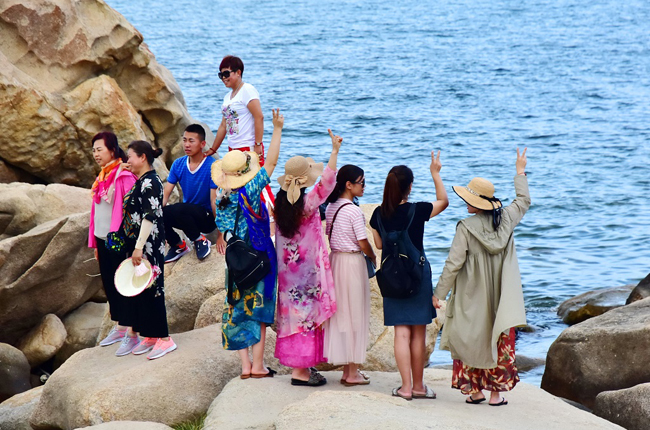
With the Chinese now accounting for Australia’s largest group of tourists, hotels are going the extra yard to make their visitors feel welcome.
Congee at the breakfast buffet, Chinese signage, Chinese-speaking staff and bottled and hot water are common adaptations at some hotels as operators pursue the growing cohort of tourists from China, Taiwan and Hong Kong.
Expanding wealth in China has resulted in a booming number of tourists venturing out around the world. Australia pulls in more than 1 million visitors annually, a number that will continue to grow, based on projections of China’s increasing prosperity.
But as their spending capacity grows so does their taste for the finer things and with that comes a growing demand for luxury accommodation.
“We’re yet to even touch the surface of the Chinese luxury traveller,” says Ross Beardsell, JLL’s executive vice-president (strategic advisory). “Australia does a superb job attracting the group tour segment from China, but we’re yet to tap into the luxury market – the guest that will stay in 5-star hotels, referred to in China as 6-star, hotels.”
Knowing the market
At 50 hotels in Australia and New Zealand, AccorHotels has embedded so called Chinese Optimum Services Standards (also known as Hao Ke Ya) to cater for the growing inbound market from China. Staff routinely receive cultural training to better understand Chinese travellers’ service expectations, preferences and sensitivities.
“This program gives our hotels an added advantage in catering for the market,” says Accor group’s chief operating officer (Pacific), Simon McGrath. “We are dedicated to proving the best possible service, which includes Chinese menu and mini bar items, translated welcome kits, Chinese TV channels and newspapers, Mandarin-speaking staff and [Chinese credit card] UnionPay.”
For hotel groups such as Accor, a strategic alliance with Huazhu Hotels Group has accelerated the development of the Grand Mercure, Novotel, Mercure, ibis and ibis Styles brands in China, Taiwan and Mongolia, which translates to more Chinese visitors using their hotels.
“With this comes an increase in brand awareness for our hotels and, as China’s outbound travellers grow exponentially, these brands are well positioned to capitalise on the influx of Chinese travellers to New Zealand and Australia,” McGrath says.
Luxe travellers boost demand
With Tourism Australia forecasting that Chinese annual spend on domestic travel, hotels and retail will hit $13 billion by 2020, Beardsell anticipates that the real impact on Australia’s hotels market is yet to be felt.
While he acknowledges the critical importance of having culturally-aware staff and offering the obvious things – menus, in-room guides, signage, etc – that are digestible and inviting to Chinese visitors, he highlights the need to balance making tourists feel at ease with providing a genuine Australian experience.
“International guests, whether from the northern hemisphere or our near-northern neighbours, are looking for a great quality room. And they also want some sort of local appeal.
“It’s not a matter of designing a room for the Chinese market, because they’re looking for an Australian luxury hotel experience.”
Destination outback
Helpfully, airlines are also getting in on the game. Since April 2018, flights out of Shenzen through Donghai Airlines have travelled direct to Darwin, and Perth has inbound tourist traffic from China Southern.
Plus, China’s strong cultural connection with wealth and luxury makes the Gold Coast a popular destination for more than its beaches, Beardsell says.
However, holidaymakers are increasingly exploring beyond the main cities. Some 2.84 million of the 8.4 million travellers who came to Australia last year spent time in the bush, coast or outback, signalling a new area of demand.
Places such as the ultra-luxury conservation-based Wolgan Valley resort near the Blue Mountains, as well as the Hunter Valley, are now hotspots for wealthy Chinese tourists.
Major potential
With the number of Chinese residents travelling overseas standing at around 100 million – of which roughly 1 per cent find their way to Australia – there’s huge scope for growth that is not lost on the hotels industry.
“As a business, we continue to learn more about what our Chinese guests are looking for in accommodation and experiences,” McGrath says.
“We know that bookings from China are increasing and this market remains an important one for our region, so we are continuing to grow in this area and assist our industry to better cater to Chinese travellers and grow the market even further.”


